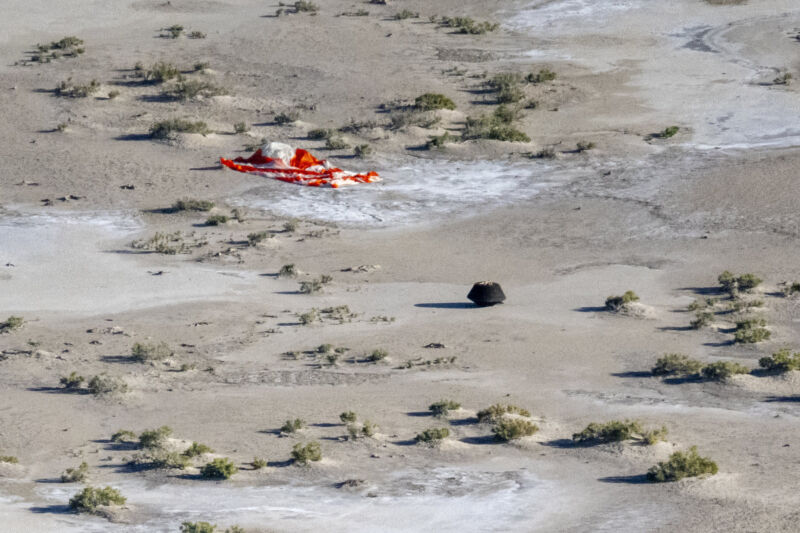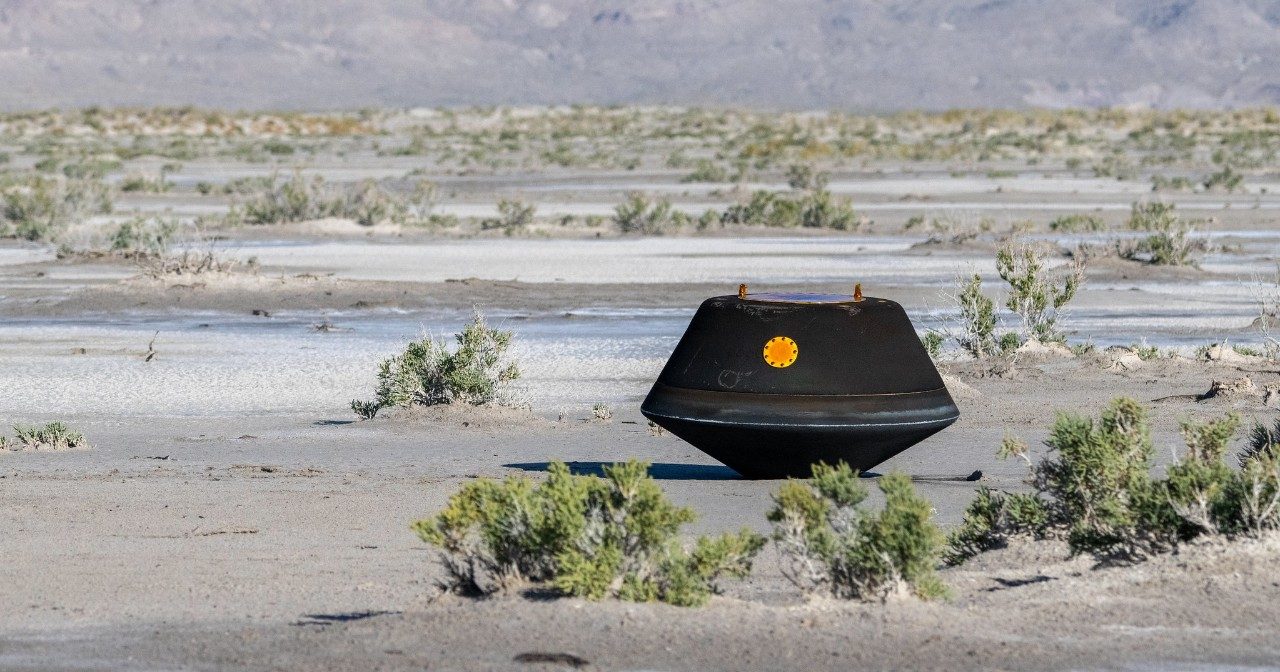
This was the moment Dante Lauretta had waited for nearly 20 years to see. A small robotic capsule was on the way back to Earth with rocks scooped from an asteroid, and Lauretta was eager to get his hands on the samples.
Led by Lauretta, scientists carefully designed the billion-dollar mission to bring home pieces of a carbon-rich asteroid thought to contain organic molecules, the building blocks necessary for life to take hold. This NASA mission, known by the acronym OSIRIS-REx, launched from Earth in 2016, collected samples from a roughly 1,600-foot-wide (500-meter) asteroid named Bennu in 2020, then set a course for return to Earth.
On September 24, the OSIRIS-REx spacecraft released the canister containing the asteroid samples to plunge into the Earth's atmosphere, while the mothership steered onto a course to take it safely back into deep space for a follow-up mission to explore a different asteroid at the end of the 2020s.
Lauretta, OSIRIS-REx's principal investigator from the University of Arizona, was a passenger in a US military helicopter circling the capsule's landing zone in the Utah desert. A heat shield protected the capsule from temperatures that built up to more than 5,000° Fahrenheit during reentry.
Then, a small drogue parachute was supposed to open to stabilize the 32-inch-wide (81-centimeter) sample return craft. About five minutes later, a larger main chute would open to slow the capsule for a gentle landing while protecting the precious asteroid material sealed inside.
At least, that was the plan. While OSIRIS-REx safely returned its asteroid sample to Earth, there were moments of high drama.
Out of order
For those watching NASA's live video coverage of the OSIRIS-REx mission's return to Earth, there were hints that something was amiss. Video imagery from a NASA tracking airplane showed the capsule tumbling toward the ground at high speed, well after the point when the drogue parachute should have been visible.
Inside a nearby helicopter, Lauretta was waiting for verbal updates on the status of the capsule.
"I heard the 100,000-foot crossing, and no drogue, and the drogue chute is supposed to come out at 100,000 feet," he recalled during a presentation last month to the National Academies' Space Studies Board. "Sixty-thousand feet, no drogue. I’m like, 'Ugh, this isn’t good.'"
The last time NASA tried to bring extraterrestrial samples back to Earth, the parachute never opened. The robotic Genesis mission ended with an uncontrolled impact in Utah, rupturing the capsule bringing back microscopic particles collected from the solar wind. Scientists were able to salvage some of the specimens, but it wasn't easy.
Lauretta called a crash like the one experienced by NASA's Genesis mission as the "worst-case scenario" for OSIRIS-REx. In that event, scientists would need to scramble to gather as much of the asteroid sample as possible from the Utah desert. Anything salvaged would need to be carefully checked for contamination from Earth's soils and life-forms.
You can watch a replay of OSIRIS-REx's landing below.
"We’re tumbling. We are in a subsonic regime, and we are not stabilized," Lauretta said. "There’s no drogue chute deployed here. Problem! So I was like trying to mentally prepare myself, because we’re on live TV, to get off this helicopter and deal with a crashed capsule in the desert."
Then, Lauretta heard confirmation from the Air Force that the OSIRIS-REx return capsule had unfurled its main parachute.
"I was like, 'What? How is that possible?'" he said. "So the main chute deployed. The drogue chute, as we’ve been able to reconstruct, went one second before the main. So it came out. It had to come out. It was in front of the main parachute in the canister, and it looks like there was a circuit issue."
NASA provided a more detailed description Tuesday of the problem that prevented the on-time deployment of the drogue chute.
The capsule was supposed to send an automated signal to deploy the drogue chute at 100,000 feet, beginning a roughly five-minute timer before a second signal would cut a retention cord for the drogue, allowing the larger parachute to unfurl and complete the landing sequence. Instead, at 100,000 feet, the signal triggered the system to cut the drogue free while it was still packed inside the capsule, according to NASA.
At 9,000 feet, the other signal sent the command to actually release the drogue chute. But with its retention cord already cut, the drogue immediately released from the capsule, and the main parachute opened as expected.
"The first signal was supposed to fire the mortar and release the drogue," Lauretta said. "The second signal was supposed to cut the cable to release the main ... It looks like the first signal cut the (cable), and then the second signal fired the mortar, so it went backwards. But it worked. We had lots of margin on that main chute. It landed safely—a beautiful pinpoint landing in the Utah desert.”
An investigation by engineers from NASA and Lockheed Martin, which built the OSIRIS-REx spacecraft and sample return vehicle, found that build plans for the mission weren't specific enough in instructing technicians who assembled the return capsule.
"In the design plans for the system, the word 'main' was used inconsistently between the device that sends the electric signals, and the device that receives the signals," NASA said in a written statement. "On the signal side, 'main' meant the main parachute. In contrast, on the receiver side 'main' was used as a reference to a pyrotechnic that fires to release the parachute canister cover and deploy the drogue.
"Engineers connected the two mains, causing the parachute deployment actions to occur out of order," NASA said.
Lauretta said scientists continue analyzing the asteroid materials delivered by OSIRIS-REx.
In a preliminary analysis of some of the dust, scientists found nearly 5 percent carbon by mass, and the material has abundant water in the form of hydrated clay minerals. It is highly plausible that asteroids like Bennu delivered the vast majority of the water now found in Earth's oceans, lakes, and rivers billions of years ago.
The team tasked with retrieving the samples from the capsule at NASA's Johnson Space Center in Houston has encountered trouble opening some of the fasteners sealing the asteroid material in the main collection chamber. While the team worked on a new plan to gather all the asteroid specimens held inside, it used tweezers to pull out some of the biggest pieces, including a roughly 1.2-inch (3-centimeter) fragment straight from Bennu.
“The organic chemistry looks fantastic," Lauretta said.



3175x175(CURRENT).thumb.jpg.b05acc060982b36f5891ba728e6d953c.jpg)
Recommended Comments
There are no comments to display.
Join the conversation
You can post now and register later. If you have an account, sign in now to post with your account.
Note: Your post will require moderator approval before it will be visible.